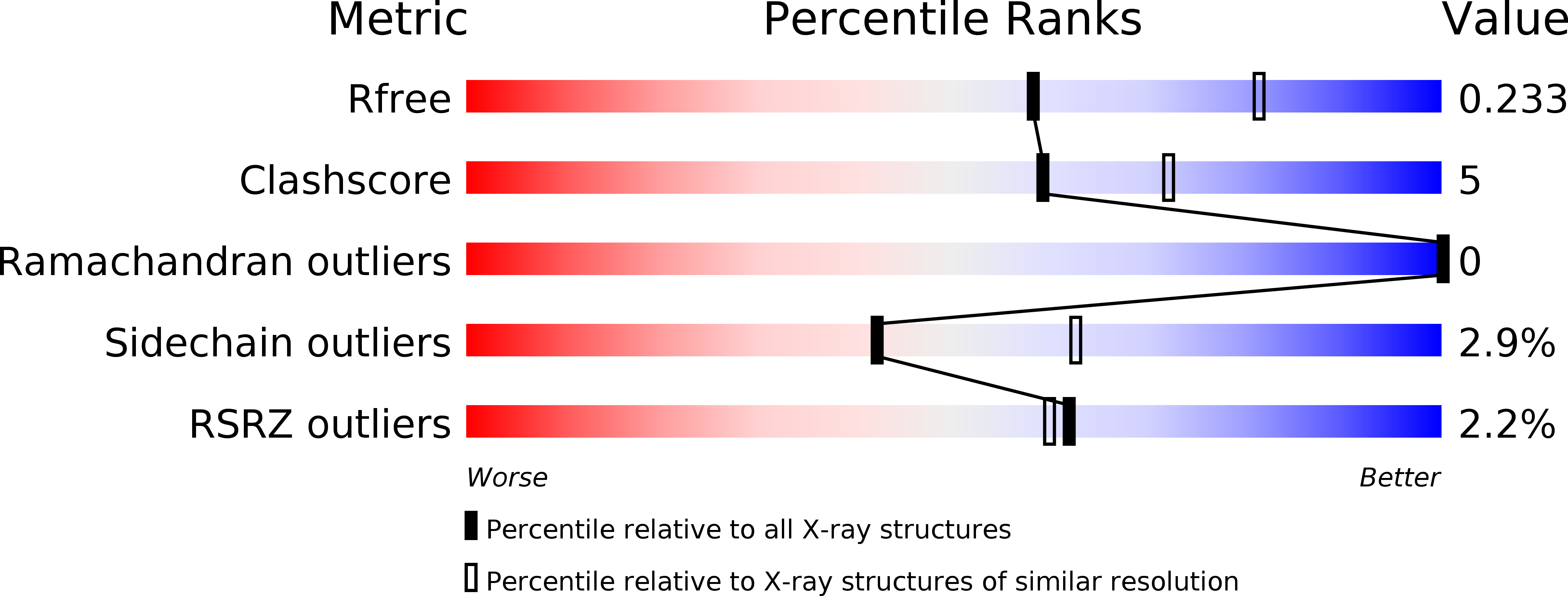
Deposition Date
2013-05-23
Release Date
2013-11-27
Last Version Date
2023-09-20
Entry Detail
PDB ID:
4KWB
Keywords:
Title:
Structure of signal peptide peptidase A with C-termini bound in the active sites: insights into specificity, self-processing and regulation
Biological Source:
Source Organism:
Bacillus subtilis subsp. subtilis (Taxon ID: 224308)
Host Organism:
Method Details:
Experimental Method:
Resolution:
2.39 Å
R-Value Free:
0.24
R-Value Work:
0.20
R-Value Observed:
0.20
Space Group:
P 21 21 21


